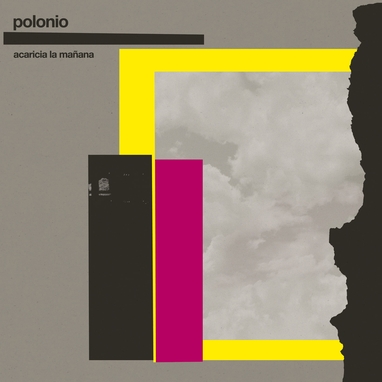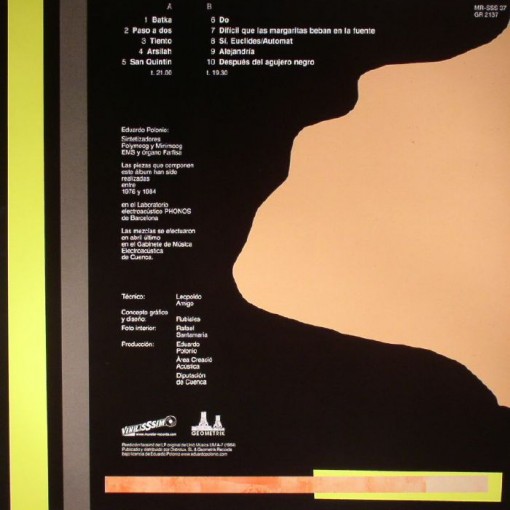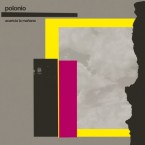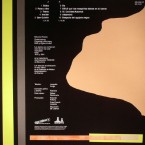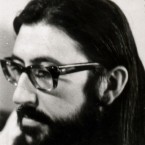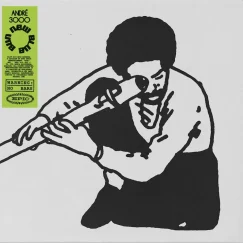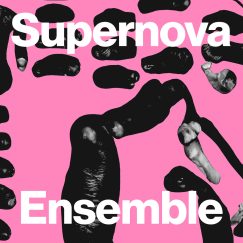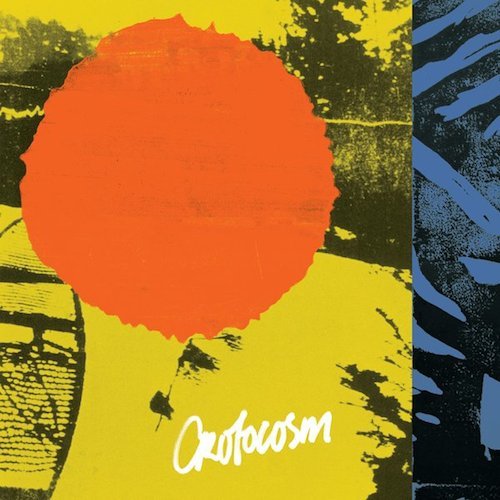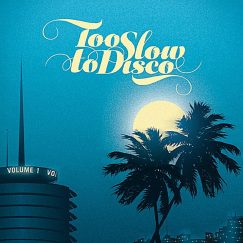Eduardo Polonio has been one of the key names of Spanish music since the late 1960s, especially as a pioneer in the field of electroacoustic music. He was a member, with Luis de Pablo and Horacio Vaggione, of Grupo Alea Electrónica Libre (1970- 1972), the first Spanish group to play electronic music live; and he was one of the main figures of Barcelona’s Laboratorio Phonos since 1976. He was also a founding member and president, between 1988 and 1994, of Spain’s Electroacoustic Music Association. In 1994 he received the Magisterium award at the Grand Prix International de Musique Électroacoustique in Bourges, France. He is responsible for an absolutely personal body of work, without any kind of stylistic debts, which has often gone beyond the recording tape in order to establish a dialogue with physical space and other artistic creations, as testified by his numerous collaborations with sculptors, video artists, painters, experimental cinema directors, stage designers, and his own work in the field of installation art.
In 1976 Polonio moved to Barcelona and got involved with the city’s Phonos Electroacoustic Laboratory, meeting composers Andrés Lewin-Richter and Josep María Mestres-Quadreny. It was the start of a new creative period of studio work and concerts reflected on “Acaricia La Mañana”, which contains 11 pieces recorded between 1976 and 1984 at Phonos and remastered at Cuenca’s Gabinete de Música Electroacústica. On the record, Polonio employs synthesizers such as Polymoog, Minimoog, EMS and a Farfisa organ. The tracks are integrated into a sort of suite that comprises the whole LP. This suite concept has a poetic origin for the author: a collection of short pieces of music from imaginary countries.
The electronic voices (the different tracks of the mix on tape) that make up each piece develop short melodic sequences of clearly modal and even tonal aspect. The cyclical repetition of these sequences, which generally spans each full short piece, places this music under the so-called repetitive label. The three or four voices with which these pieces are built are usually recognisable, but the texture is more heterophonic than polyphonic, as the composer plays with the imbalance in the superposition of the repetitions. Each voice’s evidence is also underlined by noticeable timbric differences. The timbres are obviously electronic, in pursuit of these instruments’ specific qualities. The result is a very suggestive heterophonic texture, which captivates with its fragile and pleasant appearance, and which reveals a great refinement in the rhythmic and melodic treatment.
It’s not an exaggeration to say that “Acaricia La Mañana” is a classic and essential record in the history of Spanish electronic music. This facsimile reissue of the 1984 LP released by Unió Music includes a bonus 7″ featuring four previously unissued tracks recorded by Polonio during the same period of 1976-1984.
Munster Records/Geometrik
Additional information
| Weight | 350 g |
|---|---|
| Dimensions | 32.5 × 2 × 32.5 cm |
| Label | |
| Genre | |
| Artist |

